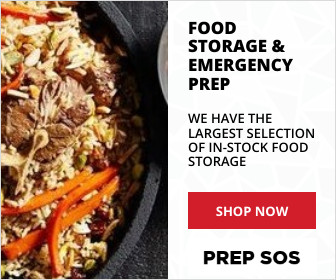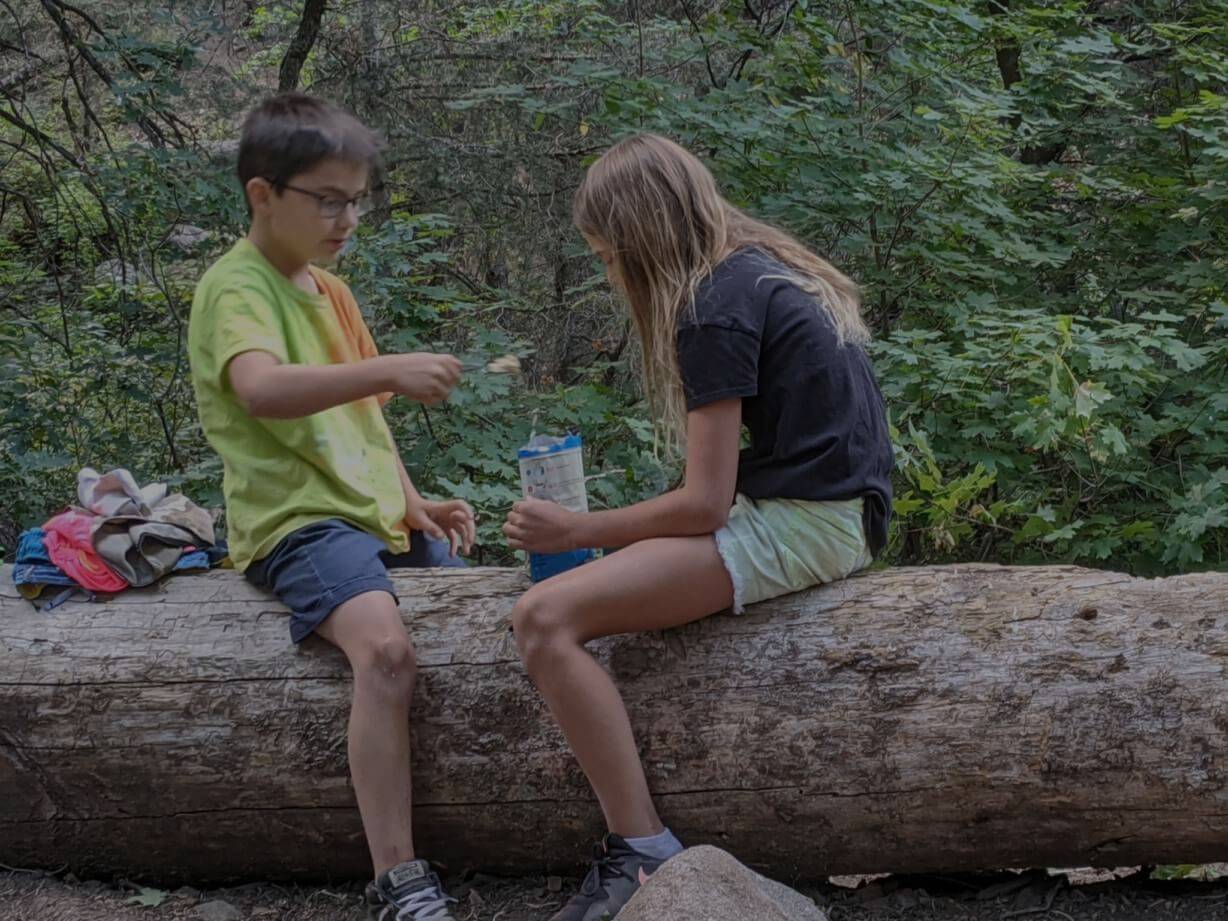
Few things are more freeing than loading your backpack and heading out onto the trails for some time out in nature. Both nature and exercise have a positive impact on the human body. Proper nutrition is important on the trail, so it is essential to know what kind of food you can bring with you and how long it lasts.
Backpacking food is designed to last for long periods of time without refrigeration. The food is freeze-dried or dehydrated to extend shelf-life. Freeze-dried food can last up to 30 years, while dehydrated food can last up to 5 years, depending on the climate, the amount of water in the food, and their storage conditions.
Taking off into the woods for a few days off the grid can be relaxing and create memories that you will cherish for a lifetime, but you shouldn’t hit the trails without serious planning – especially when it comes to bringing enough food and water. Read on and learn what you need to keep yourself fed in the woods.
How Long Does Backpacking Food Last?
People have been prepping food for travel situations since the beginning of civilization. Modern times and accessories have made the job much more comfortable than in the past, but there will still be a significant time commitment to prepare the food correctly. (Source: IPD Camping Foods)
The most effective food to take with you when going out into the glorious wilderness are:
- Freeze-dried– Freeze-drying will make the food last up to 30 years, unopened. However, this shelf-life could be much shorter, depending on where and how the food is stored and what conditions your backpacking through. Also, that all changes once the pack is opened.
- Dehydrated – A dehydrated pack of food should last around five years, unopened. The same factors that can shorten the shelf life of freeze-dried food come into play here: oxygen, moisture, and light can all impact a food’s safe storage time.
Both of these types of food preparation will last you a good, long time when backpacking.
We’re going to further explore how to make your own backpacking food, using freeze-drying and dehydration. We’ll also talk about which foods work best for preserving for the trail and where to buy prepared backpacking foods if you don’t have time to make them yourself.
Freeze-Drying Keeps Backpacking Food Fresh
The best method for making food last longer for your backpacking trip is freeze-drying.

Freeze-drying is a process that removes water from the food. The water inside of food is a breeding ground for bacteria that will spoil your food as it sits. The process works by freezing the food, promoting sublimation by heating the food, and increasing pressure inside the freezer. (Source: Millrock Tech)
Here are the three steps involved in freeze-drying food:
- Freezing – The freezing phase is done in a freezer or on a shelf of a freeze-dryer. The food will be frozen right below its triple point. This temperature ensures the food will not thaw during sublimation but will instead remove ice crystals and excess moisture. This process must be done quickly because too many ice crystals will alter the food’s taste and composition.
- Sublimation – The sublimation process is the first drying step for the food when pressure is lowered, and heat is added. This part of the process will remove water and ensure that no ice crystals remain in the food. Sublimation is one of the most nerve-wracking parts of the process. If the pressure or heat is too low, the food will spoil.
- Adsorption – Adsorption is the second drying process, where the food is brought to an even higher temperature to allow for the bonds between food and water to release. Adsorption brings the food’s water content down to 1-5% percent, depending on the food. Take care not to overdry the food during this step.
Freeze-drying is a sensitive process. If there is too much moisture in the air during the pressure phase, the internal workings could cease to function and turn the meal into a hardened surface that looks more like lava rock than food. For food with a definite shape, like a T-Bone, you should use a higher temp when drying.
In a backpacking situation, having freeze-dried food is the way to go. Freeze-drying protects the nutrients in food much better than dehydration and doesn’t change the food’s appearance. Nutrients are of the utmost importance on the trail.
Best Foods for Freeze-Drying
Freeze-drying works by dropping foods to between -30 and -50 degrees before removing the water from them with a vacuum. Taking the water out of the food is what makes it last so long. Water is a breeding ground for germs and bacteria that can, over time, break down foods and turn them rancid.
The best foods to freeze-dry are:
- Fruit – Freeze-dried fruits have been making their way into snack aisles around the country more and more lately. Freeze-dried fruit retains its flavor for much longer than normal. The end product packs a sugary punch.
- Vegetables – Just like fruit, a freeze-dried veggie will have the same flavor as before the process occurred. A very common thing is for backpackers to freeze-dry entire meals. Not just vegetables – we’re talking complete with meat and ice cream.
- Meat – Freeze-drying meat for a long backpacking trip could save the day. While it has a leathery consistency, it will provide needed protein in dangerous situations. Meat and veggies freeze-dried and packed together could be the only treat of the trip.
(Sources: SkilledSurvival.com)
Dehydrating Food for the Backpacking Trail
Food dehydrators are available at almost every kitchen appliance store. They are very popular, and people use them for all kinds of food and treats. Dehydration is also a less involved process than freeze-drying.

The food is placed on racks inside the dehydrator, and a heat source in the middle warms the machine until the water in the food evaporates.
Dehydrating not only protects the food from bacteria, but it also makes the food lighter. If you are going into the woods for several days, weight is going to be very important. Packing for a long trip requires very specific planning. The wrong amount of water or food could spell disaster for the trip.
One of the most important things to stress about using a dehydrator is that some foods will stink up the entire house.
As a rule, you should dehydrate fish and other lean cuts of meat in a well-ventilated garage or patio area. The smell of fish being dehydrated will make you want to replace the carpets and repaint the walls. It is that bad.
Best Foods for Dehydrating
Dehydrating food is one of the oldest forms of food storage in civilization. Nomads dried the meat they harvested before picking up and moving to where the food sources were more plentiful. As time passed, they began to see which foods lasted and which ones turned.
The best foods for dehydrating are:
- Fruit – Fruit is one of the best foods to dehydrate. Just like freeze-drying, fruit maintains its natural, sugary, delicious flavor after the process.
- Vegetables – Vegetables will have a spot carved out in your dehydrator once you add tomatoes and peppers to your backpack meals.
- Beans – Another great source of protein is beans and legumes. Dehydrating a few different kinds of beans add calories, which will provide energy to get in those extra miles while backpacking. (Source: Freshoffthegrid.com)
Best Backpacking Foods on the Market
In the last decade, the backpacking food industry has added something the customers have always wanted, flavor.

Today there are several companies that have delicious meals that can come in either freeze-dried or dehydrated. This is all great news for backpackers because this food will be good for at least three years before it needs to be replaced.
Some great freeze-dried backpacking meal options are:
- Mountain House – Mountain House makes some of the best meals on the backpacker market. They come in large plastic pouches that make it easy for storage and eating. While backpacking is their wheelhouse, the good folks at Mountain House also provide disaster preparedness meals. These will keep the family fed and happy if there is a weather event or some other obstacle while you are backpacking.
- Readywise – Readywise has a great bucket of meals that can be used for emergencies and backpacking trips alike. It comes with 104 different options of meal to choose from, and the breakfast portions are especially tasty. Adding water will be needed for a few of the meals and should be kept close by as some food could be chalky or dense.
- Nutrient Survival – This company takes outdoor dining to the next level. They are super health and environmentally focused with only non-processed, non-GMO foods in their packs. They make freeze-dried and dehydrated packs that won’t replace an evening at your favorite steak house but will keep you moving as you head down the trail.
Superb options for dehydrated meals are:
- Good to Go – Good to Go makes excellent dehydrated meals perfect for getting some quality calories in while you are hiking. Just add water to these packs, like beloved MRE’s from the armed forces, and your meal will heat in a few minutes. These meals have a flavoring that well surpasses the horrors of the veggie omelet meals from years prior. The Cuban Rice Bowl is a thing of beauty that should find its way into your pack.
- Food for the Sole – A company that has a pun in its name can’t go wrong with hikers. Food for the Sole has some delicious dishes that just need water added. Some are cooked in the pouches, while others will require a skillet and fire to warm them up. Stopping each day to build a fire ring and fire can take precious time away from hiking. Keep this in mind while choosing Food for the Sole.
Conclusion
Overnight backpacking is a different animal than a regular campout. It requires more planning, and a diverse food strategy is needed to make up for calories burned while walking. Include meals in your pack that are calorie-dense with tons of nutrients like salt and fat. Keep the pack light as more weight means more strain and more electrolytes lost in transition.
Backpacking food is made to be light and full of calories. Taste isn’t always that big a deal. Make your backpacking trip one to remember by packing the appropriate foods and water. It is always best to overpack than to under eat.



